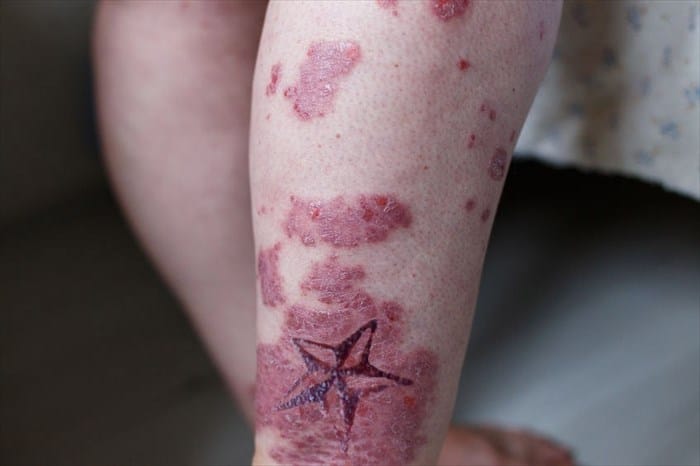Alright, you fearless tattoo warriors, you’ve taken the plunge and gotten yourself some fresh ink. Bravo! But hey, the journey’s not over just yet. Now it’s time to embark on the wild and wonderful adventure of tattoo aftercare. Don’t worry, we’ve got your back (and your newly inked canvas) with the ultimate guide to healing and maintenance.

From the do’s and don’ts of cleaning to battling the itch like a tattoo ninja, we’ll equip you with all the knowledge you need to keep that beautiful artwork looking vibrant and healthy. So, grab your moisturizer, put on your superhero cape, and get ready to conquer the world of tattoo aftercare like the badass you are!”
Understanding the Healing Process
Protecting your tattoo from excessive sun exposure is paramount. UV rays can fade and damage the vibrant colors of your tattoo over time. Whenever you’re going to be out in the sun, make sure to apply a broad-spectrum sunscreen with a high SPF to the tattooed area. Additionally, consider wearing clothing that covers your tattoo or using a physical barrier, such as a bandage or a tattoo-specific sun-protective film, to shield your artwork from direct sunlight.

Moisturizing your healed tattoo on a regular basis is also crucial. Opt for a fragrance-free, tattoo-friendly moisturizer and apply it sparingly to prevent excessive greasiness. Keeping your skin hydrated not only promotes the longevity of your tattoo but also helps maintain its overall appearance and prevents it from looking dry or dull.
Maintaining good overall skin health is beneficial for your tattoo as well. Stay hydrated, eat a balanced diet rich in vitamins and minerals, and avoid habits that can negatively impact your skin’s health, such as smoking or excessive alcohol consumption.

Lastly, don’t forget to schedule touch-up sessions if needed. Over time, tattoos may experience some color fading or line blurring. If you notice any areas that require touch-ups or adjustments, consult with your tattoo artist to discuss the possibility of refreshing or enhancing your tattoo.
Understanding the healing process of tattoos empowers you to take the necessary steps to ensure the best possible outcome for your cherished artwork. Remember, each person’s healing journey may vary slightly, and it’s important to follow the specific aftercare instructions provided by your tattoo artist. With proper care, your tattoo will continue to be a beautiful and meaningful expression of your individuality for years to come.

Proper Cleaning and Hygiene
Proper cleaning and hygiene are essential for the optimal healing of your tattoo. To keep your new ink in top shape, start by gently washing your tattooed area with a mild, fragrance-free soap and lukewarm water. Pat it dry with a clean, soft towel, avoiding any rubbing or scrubbing. Once dry, apply a thin layer of tattoo-specific aftercare product recommended by your tattoo artist.

Be sure to avoid excessive moisture, such as swimming or soaking in water, and choose loose-fitting, breathable clothing to prevent irritation. Resist the urge to touch or pick at your tattoo, as it can introduce bacteria and hinder the healing process. By following these practices, you’ll ensure that your tattoo heals beautifully and maintains its vibrancy for years to come.

Moisturizing for Optimal Healing
Moisturizing your tattoo is a vital aspect of its aftercare that plays a significant role in the healing process. By keeping your tattoo properly hydrated, you can promote faster healing, minimize discomfort, and maintain the integrity of the ink. Here’s what you need to know about moisturizing your tattoo for optimal healing.
After washing your tattoo, ensure that the area is completely dry before applying any moisturizer. Choose a tattoo-friendly lotion or ointment that is specifically formulated for aftercare. Look for products that are fragrance-free, hypoallergenic, and free from harsh chemicals that can irritate your skin. Your tattoo artist may recommend a particular brand or type of moisturizer, so be sure to follow their advice.

When applying the moisturizer, use clean hands or a clean cotton swab to avoid introducing any bacteria to the tattooed area. Start with a small amount and gently massage it into your skin using circular motions. The goal is to create a thin, even layer that covers the entire tattoo without suffocating it. Avoid applying too much moisturizer, as this can clog your pores and hinder the healing process.
The frequency of moisturizing your tattoo will depend on your skin type, the size of the tattoo, and the stage of the healing process. Typically, you’ll want to moisturize your tattoo 2-3 times a day or as instructed by your tattoo artist. However, be cautious not to over-moisturize, as excessive moisture can delay healing and lead to issues like maceration or bacterial growth.

Throughout the healing process, observe how your tattoo reacts to the moisturizer. If it feels excessively greasy or starts to break out, you may be using too much moisturizer or a product that is not suitable for your skin. In such cases, consult with your tattoo artist or a dermatologist for alternative recommendations.
Protecting Your Tattoo
To ensure your tattoo stays vibrant and intact, take steps to shield it from potential harm. Avoid prolonged sun exposure by using broad-spectrum sunscreen or covering it with clothing. Choose loose-fitting garments to prevent friction and irritation. During the healing process, refrain from scratching or picking at your tattoo to prevent damage. Apply a tattoo-specific ointment, like Aquaphor or Hustle Butter, to keep it moisturized and aid in the healing process. With proper care and attention, your tattoo will remain a stunning work of art.

Taking proactive measures to protect your tattoo can significantly contribute to its long-term preservation. Shield your tattoo from excessive sun exposure by applying sunscreen with a high SPF and seeking shade when possible. Choose clothing that covers your tattoo when venturing out. Avoid scratching or picking at your tattoo, as it can lead to scarring and color distortion. Apply a thin layer of tattoo-specific ointment, such as Tattoo Goo or After Inked, to keep your skin moisturized and aid in the healing process. By prioritizing protection, you can ensure that your tattoo remains a stunning and cherished piece of art for years to come.

Clothing and Tattoo Care
Proper clothing choices and attentive care are crucial for preserving the beauty of your tattoo. Opt for loose-fitting garments to prevent friction and irritation. Breathable fabrics like cotton allow your skin to breathe and aid in the healing process. Shield your tattoo from sun damage by covering it with clothing or applying sunscreen with a high SPF.

Keep your clothing clean to avoid introducing irritants to your tattooed skin. Follow the aftercare instructions provided by your tattoo artist, ensuring regular washing and moisturizing. By combining thoughtful clothing selection with diligent care, you can nurture your tattoo and keep it looking vibrant for years to come.
Avoiding Activities That Can Harm Your Tattoo
Well, there are a few activities you should avoid to keep your ink looking fresh and fabulous. First off, let’s talk about sweating it out at the gym. While exercise is great for your overall health, intense workouts can be rough on your tattoo. Excessive sweating and friction can irritate the skin and disrupt the healing process. So, take it easy for a little while and give your tattoo some time to settle in.

Next up, swimming. Sure, taking a dip in the pool or ocean sounds tempting, especially during those scorching summer days. But hold on a second, water and tattoos don’t always mix well, especially when your tattoo is fresh. Immersing your tattoo in water can cause the ink to fade and even increase the risk of infection. So, put off those aquatic adventures until your tattoo has fully healed.
Dealing with Itching and Scabbing
y. Trust me, I know the struggle. But before you go scratching like there’s no tomorrow, let me give you some tips to handle that maddening itch and the scabbing that comes along with it.
First things first, don’t panic. Itching and scabbing are totally normal parts of the healing process. Your skin is working hard to repair itself and create that stunning tattoo masterpiece. But here’s the deal: scratching can damage your tattoo and even lead to infection. So, resist the urge to scratch that itch, no matter how tempting it may be.

Instead, try some gentle tapping or slapping around the itchy area. This can provide temporary relief without causing harm. You can also apply a cool, damp cloth to soothe the itchiness. Just make sure the cloth is clean and doesn’t rub against your tattoo too harshly.
Now, let’s talk scabs. As your tattoo heals, you might notice some scabbing or flaking. It’s important to let those scabs naturally slough off on their own. Don’t pick or peel them, as this can pull out the ink and result in patchy or uneven color. Just be patient and let your body do its thing.

To promote healing and minimize itching, keep your tattoo moisturized. Apply a thin layer of tattoo-specific aftercare ointment recommended by your artist. Gently massage it into your skin, but don’t overdo it. Too much moisture can actually prolong the healing process.
Recognizing Signs of Infection
When it comes to your beloved tattoo, keeping an eye out for potential infections is crucial. While infections are relatively rare, being able to spot the signs early on can help protect your skin art and ensure proper healing. Pay attention to any changes and look out for increased redness that extends beyond the tattooed area.

Excessive swelling or persistent pain that doesn’t subside should raise concern. Unusual discharge, such as pus or a foul odor, and delayed healing are also red flags. Additionally, systemic symptoms like fever, chills, fatigue, or swollen lymph nodes should not be ignored. If you notice any of these signs, don’t hesitate to seek medical advice. Taking swift action can prevent complications and ensure that your tattoo remains a beautiful and cherished piece of art.

